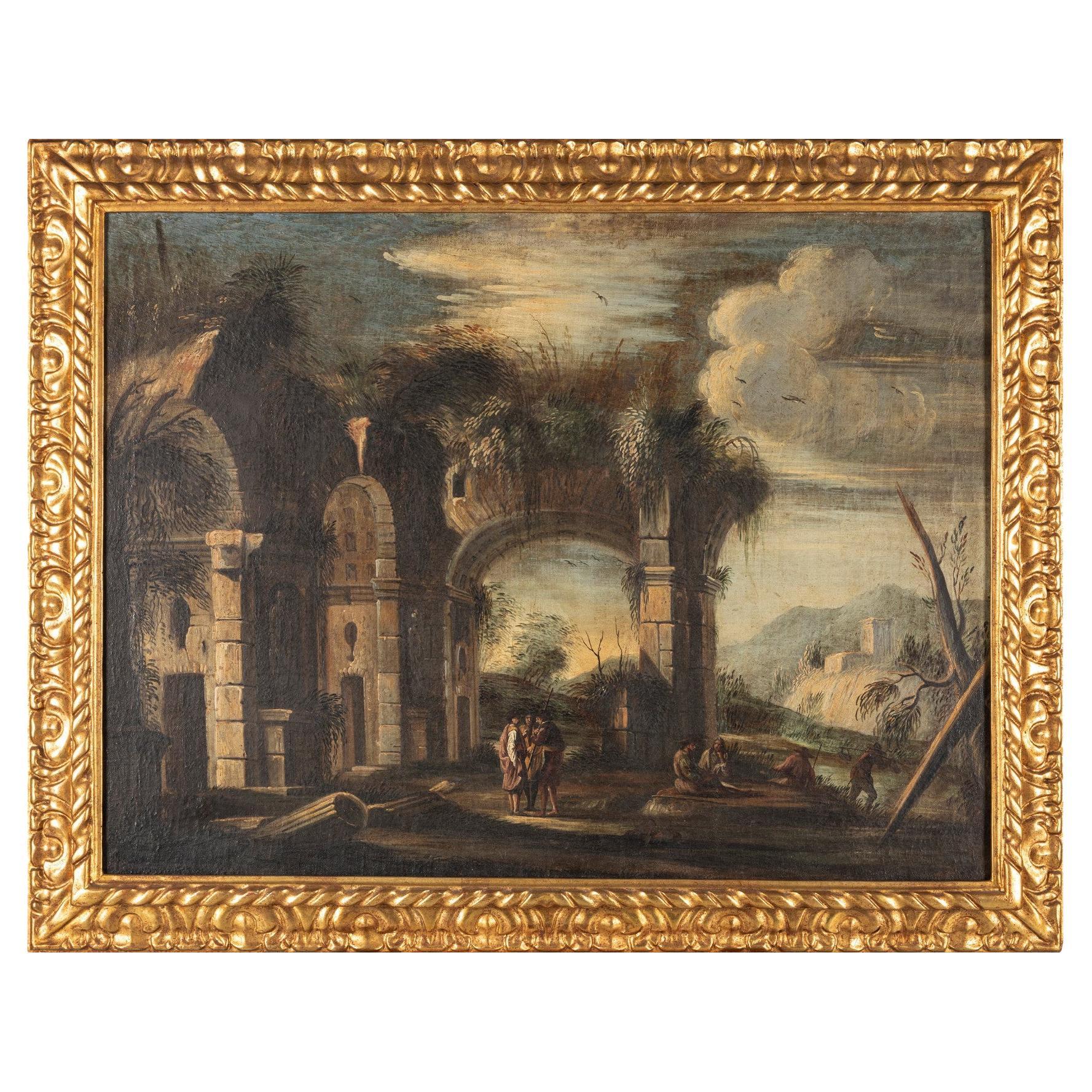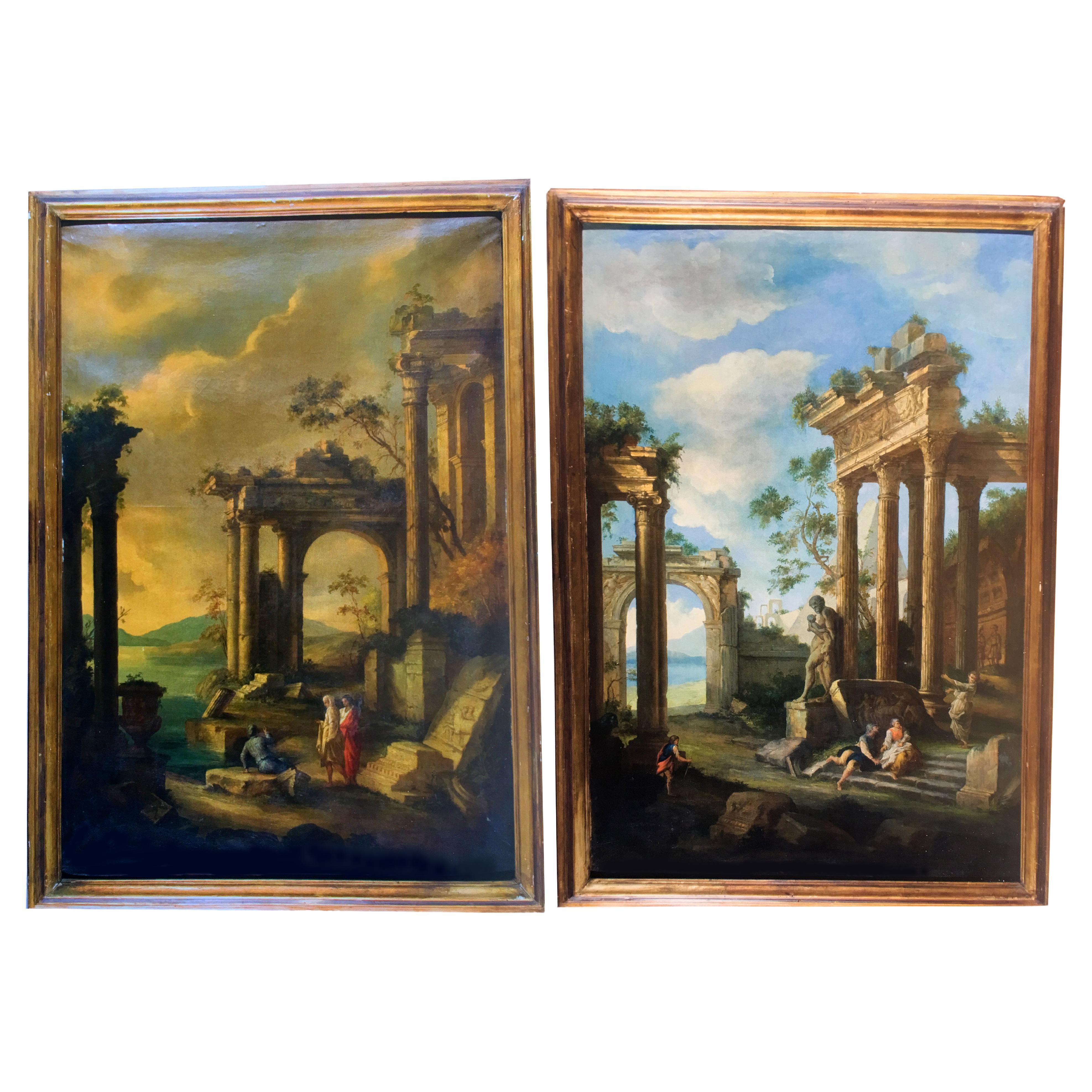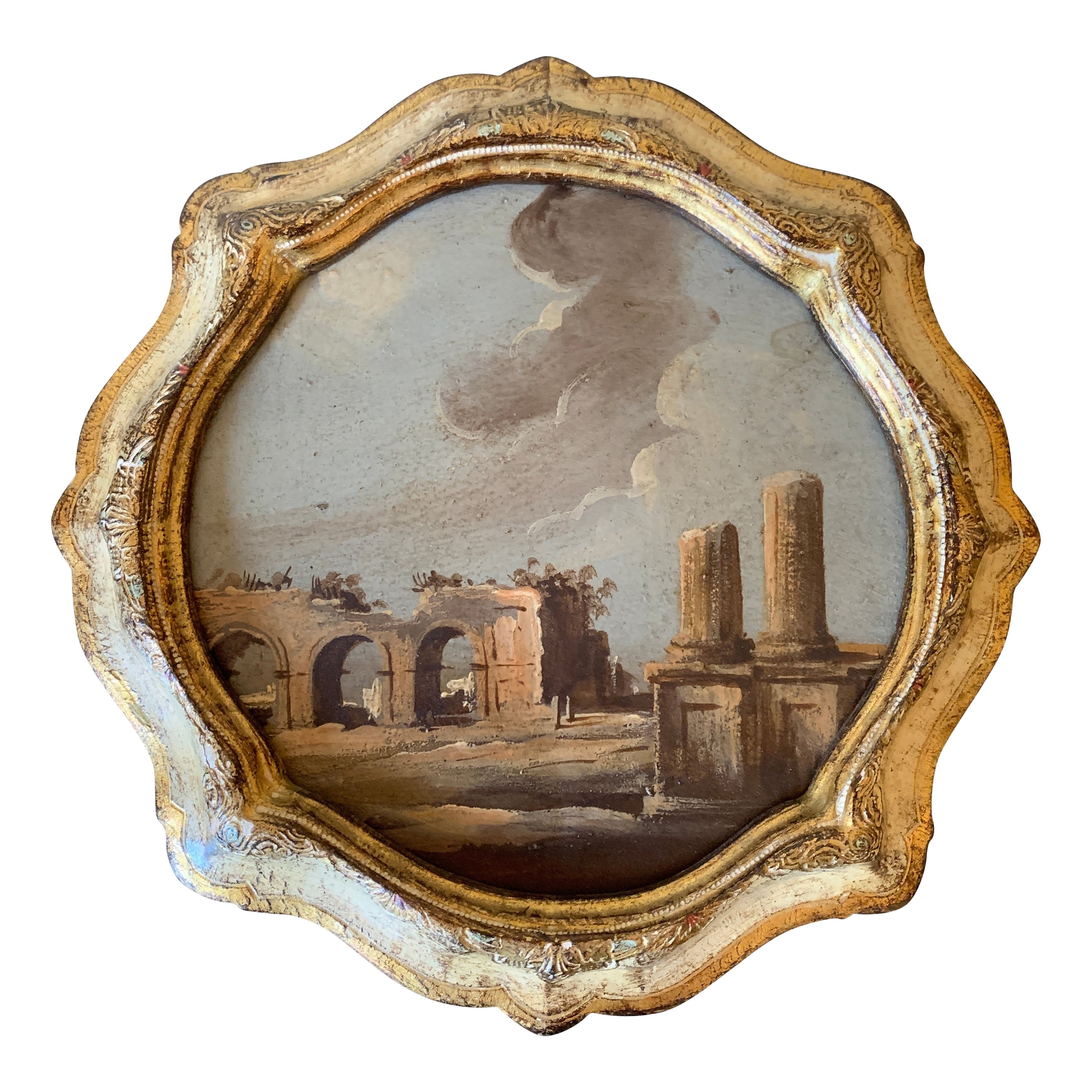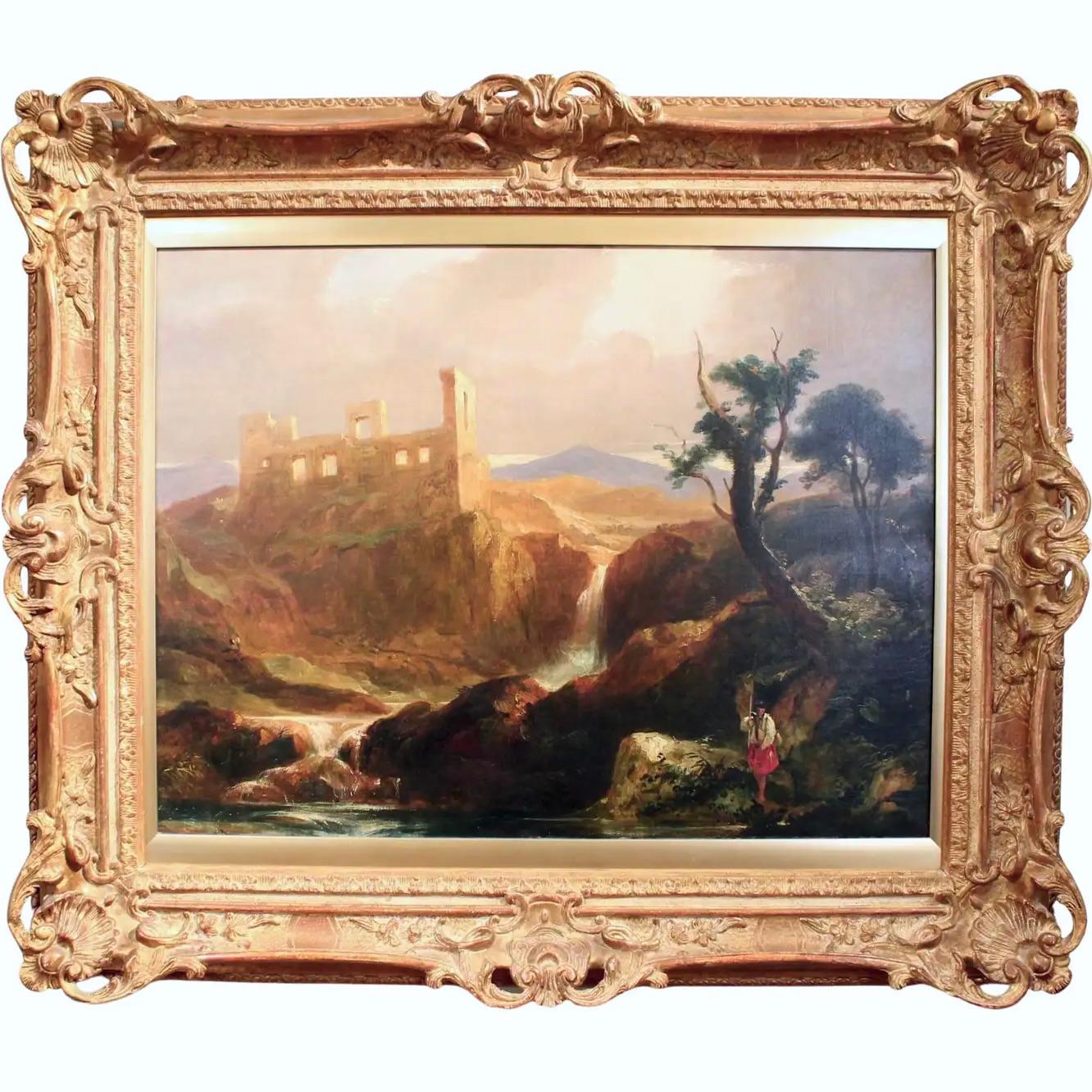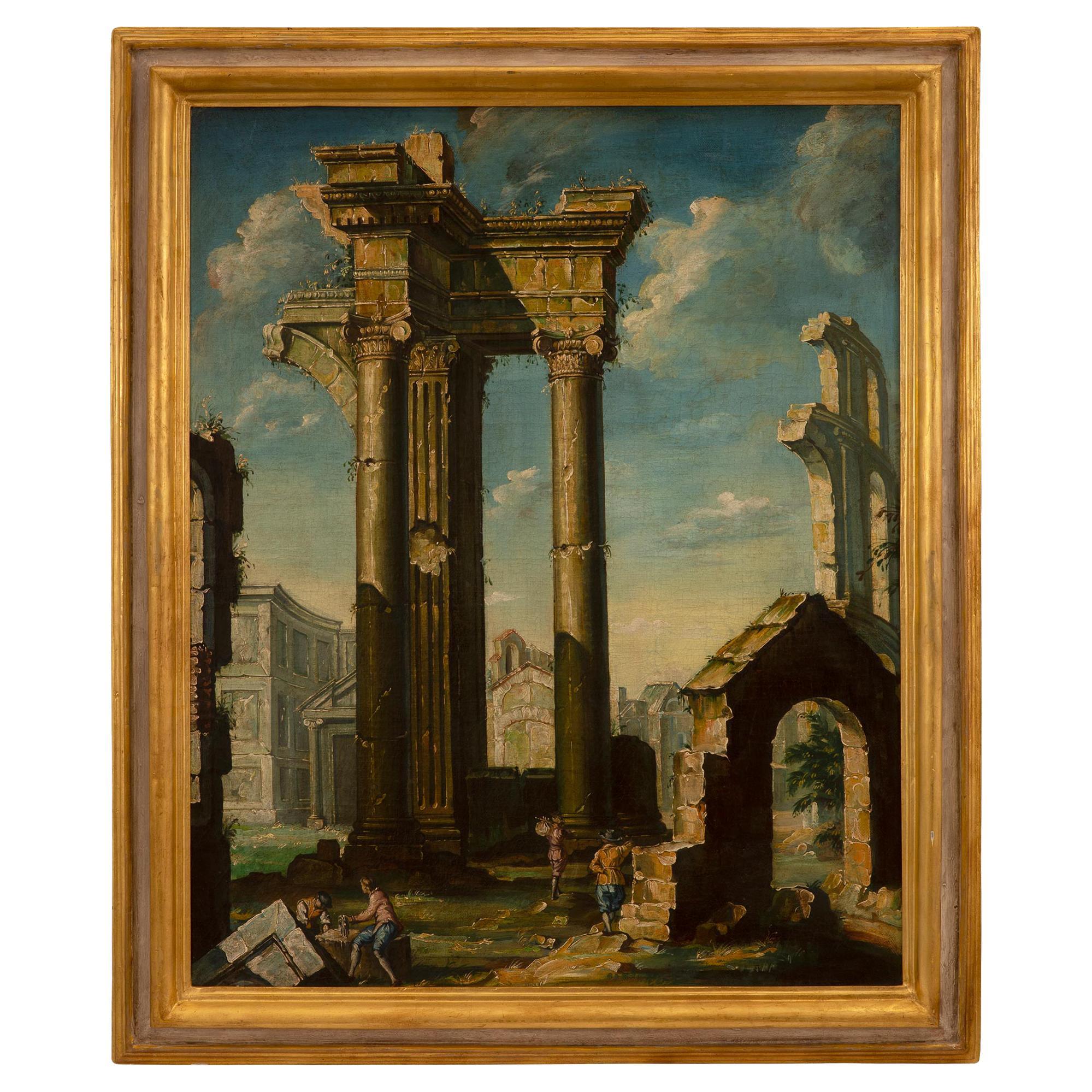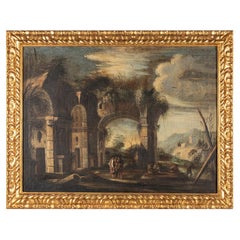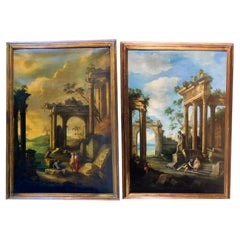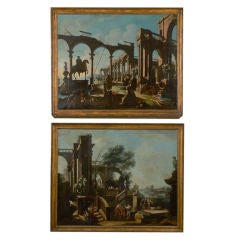
A Pair of Landscapes with Figures & Ruins by Ghisolfi
View Similar Items
1 of 10
A Pair of Landscapes with Figures & Ruins by Ghisolfi
About the Item
Ghisolfi was born in Milan in 1623 and died there in 1683. The artist first trained with his uncle, Antonio Volpino, before traveling to Rome to continue his studies and begin his career. In Rome, he was a friend and close associate of Salvator Rosa, with whom he frequently collaborated. Following his time in Rome, most of his career was in the Lombardy region.
The present paintings are typical of the most prized works by Ghisolfi -- i.e., paintings of architectural ruins and fragments amidst luscious landscapes and lakes -- further examples of which are in many prominent collections and museums (see below for a short list). Ghisolfi's works in this genre pre-dated the rise in neoclassical tastes in the 18th century and are known to have inspired Antonio Canal, known as "Canaletto."
Similar and related works by Giovanni Ghisolfi appear in:
--The Royal Collection, Windsor Castle, U.K.;
--The Princely Collections, Liechtenstein Museum, Vienna, Austria;
--The State Museums of Florence, Italy; and
--Le Palais Fesch, Musee des Beaux-Arts, Ajaccio, France.
Ghisolfi executed many beautiful frescoes in the Palazzo Trissino Baston, Palazzo Giustiniani Baggio, and Palazzo Borromeo Arese, as well as at numerous religious sites in Lombardy.
- Dimensions:Height: 46 in (116.84 cm)Width: 56 in (142.24 cm)
- Sold As:Set of 2
- Materials and Techniques:
- Place of Origin:
- Period:
- Date of Manufacture:mid 17th century
- Condition:Excellent, with minor restorations.
- Seller Location:Atlanta, GA
- Reference Number:1stDibs: 1003238273281
You May Also Like
- Follower of Giovanni Ghisolfi Milano 1623 - 1683By Giovanni GhisolfiLocated in Firenze, ITShipping policy No additional costs will be added to this order. Shipping costs will be totally covered by the seller (customs duties included). Follower of Giovanni Ghisolfi Schol...Category
Antique 1670s Italian Baroque Paintings
MaterialsCanvas
- Architectural Capriccio of Roman Ancient Ruins with FiguresLocated in Vero Beach, FLArchitectural Capriccio of Roman Ancient Ruins with Figures. Italian, 18th century large painting in oil on canvas is from the school of Giovan...Category
Antique 18th Century Italian Other Paintings
MaterialsCanvas
$16,800 Sale Price20% Off - Italian Painter of 1700 "Capriccio with classical ruins and figures"Located in Cesena, FCPainter of ruins xviii century: "capriccio with classical ruins and four figures" , pendant with "capriccio with classical ruins and three figures" Oil on canvas cm 140 x 95 The ...Category
Antique 1730s Italian Paintings
MaterialsCanvas
- Pair of Italian Capriccio Framed Oil on Canvas Paintings of Landscape With RuinsLocated in Elkhart, INA gorgeous pair of Grand Tour style framed oil paintings of an Italian Capriccio landscape with ruins Italy, Mid-20th Century Oil on canvas, gilt frame Measures: 9.5"W x 1"D x 9.5...Category
Mid-20th Century Italian Grand Tour Paintings
MaterialsCanvas, Giltwood, Paint
- Landscape with Figures by Gaston SebireBy Gaston Sébire 2Located in Sheffield, MAGaston Sebire French, 1920-2002 Landscape with figures Oil on canvas 31 by 41 ½ in. With frame 38 by 48 ½ in. Signed lower right Gaston Sebire (1920 – 2002) Gaston Sebire, was one of Europe’s leading landscapists, was born in the village of Saint-Samson in Normandy in 1920. A self taught artist, he began to paint seriously at the age of eighteen. For eight years he worked as a postal clerk in the Rouen, sorting letters at night in order to support his career as a painter. In 1952 Gaston Sebire had his first exhibition at the Galerie Gosselin in Paris. The following years he enjoyed the double triumph of winning both the coveted Prix de la Critique and the Prix Casa Velasquez. The Latter award made it possible for him to spend a year and a half in Spain. Of this formative period he said, “They were my first, wonderful years without worry. For fifteen years I had never known what the next day would bring.” The year 1957 marked another important stage in his career. His painting “La Dinde” won the Greenshields Prize in a field of 136 competitors, making it possible for him to paint for another two years without the worry of finances. Winning the awards naturally drew public attention to the artist from Normandy, and his works were presented in highly successful one-man shows in Paris. Sebire was a Norman, a man strongly attached to the soil, and after his exhibitions in Paris, he returned to Rouen to his large house overlooking the town and once again plunged into painting the countryside. Gaston Sebire was a strongly built man with square hands and a rather heavy walk. He had immense vitality, and used that to his advantage. As he said of himself, “When the snow falls, I can’t stay indoors. I set out with my paint box. I paint outdoors from nine in the morning until five at night. If it were only a question of money, one could just as well paint in one’s own room.” But Sebire went into the countryside, or into the village, and sets up his easel. When there is a café into which people are going; there is a fence, a telegraph pole, a few buildings in the background. The scene takes on life, vivid life, with a sense of some event about to take place in the scene. Like many artists, and like a typical Norman, Sebire was silent and solitary by nature, with a personality as strong and Frank as his paintings. A painting, he says, “must have an element of mystery, show an effort to look beyond the aura surface of things.” Sebire’s early paintings were somber with much use of black and white tones. In 1970 he turned to colour. The subtle light of the Normandy skies; the shifting light and color along the seacoast; the magnificent blues of the Rouen pottery...Category
Vintage 1960s French Paintings
MaterialsCanvas
- 18th Century, French Painting with Landscape with RuinsLocated in IT18th century, French Painting with Landscape with Ruins Measures: frame cm L 165 x H 95 x P 10; canvas cm L 142 x H 71 This painting depicti...Category
Antique Late 18th Century French Baroque Paintings
MaterialsCanvas
